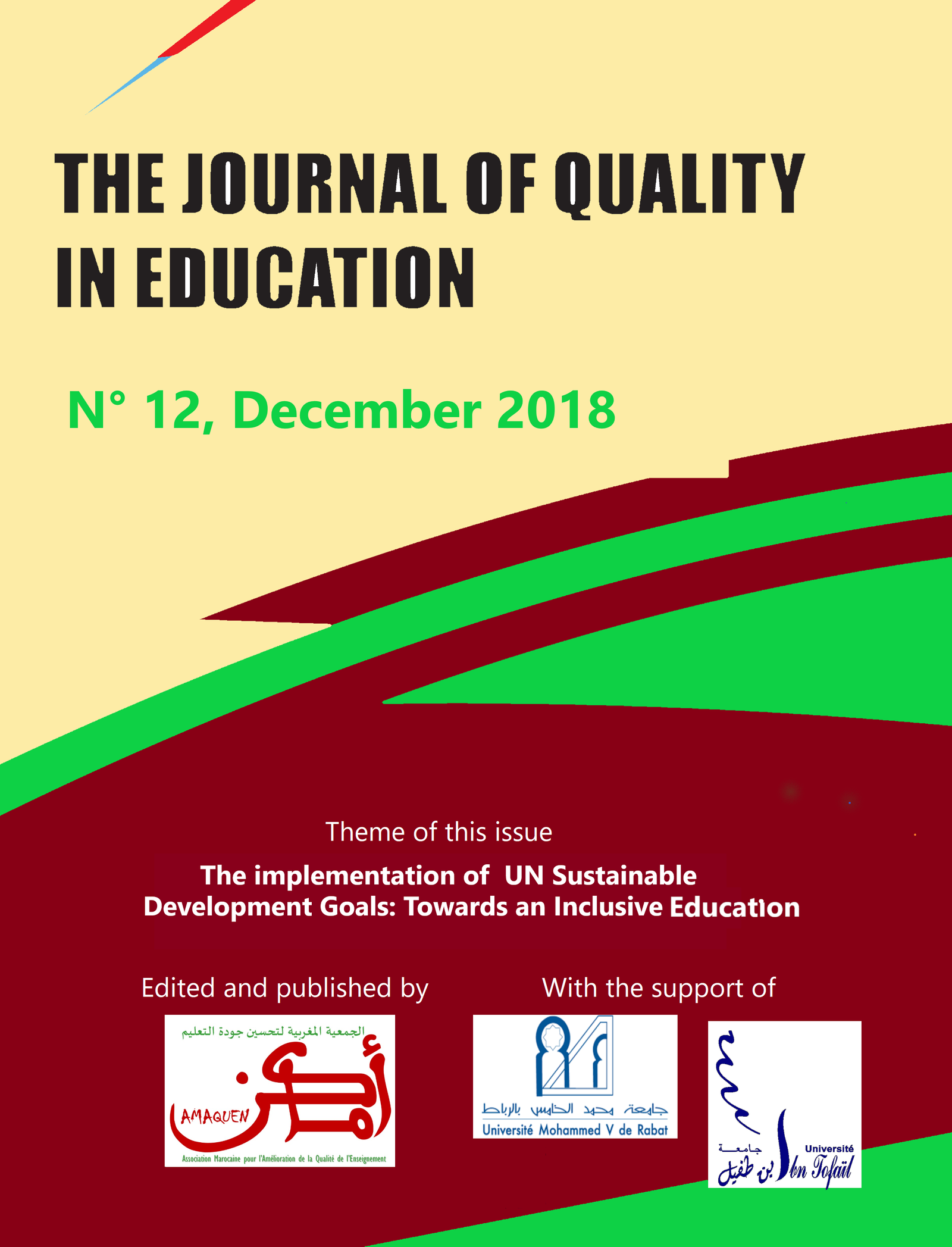Quality of basic education and educational inequality in Morocco Comparative study
Main Article Content
Abstract
The world declaration of education for all (EFA) adopted in Jomtien (1990) and the Dakar framework for action (2000) have clearly defined a global vision which relates to generalized, equitable and quality education (UNESCO: world report education for all).
Fairness in school has become a requirement because of its inseparability from quality. It is in this sense that the new reform of the Moroccan school appears that of the strategic vision 2015-2030 which advocates a school of equity, quality and promotion of the individual and society.
This contribution aims to shed light on the different forms of educational inequality that hinder the achievement of development objectives in terms of access to quality education, and this through a comparative approach to quality systems in pay from the MENA region. We will also try to focus on indicators of equity and quality linked to the teaching process while drawing on recent data from international assessments TIMSS (2015) and PIRLS (2016).
Article Details

This work is licensed under a Creative Commons Attribution-NonCommercial-ShareAlike 4.0 International License.
Authors who publish with this journal agree to the following terms:
- Authors retain copyright and grant the journal right of first publication with the work simultaneously licensed under a Creative Commons Attribution License that allows others to share the work with an acknowledgement of the work's authorship and initial publication in this journal.
- Authors are able to enter into separate, additional contractual arrangements for the non-exclusive distribution of the journal's published version of the work (e.g., post it to an institutional repository or publish it in a book), with an acknowledgement of its initial publication in this journal.
- Authors are permitted and encouraged to post their work online (e.g., in institutional repositories or on their website) prior to and during the submission process, as it can lead to productive exchanges, as well as earlier and greater citation of published work.
References
Alain Mingat, « mesure et analyse de l’égalité et de l’équité en éducation », Revue économique. V39, N°1, 1988.
Aletta Grisay, « Quel indicateurs pour quelle réduction des inégalités scolaires ? », communication à la conférence biennale de l’ADEA, décembre 2003.
Crahay Marcel, « L'école peut-elle être juste et efficace ? », Bruxelles : de Boeck Université, 2000.
Denis Meuret, « tentative de la comparaison de l’équité des systèmes éducatifs Français et Américain », carrefour de l’éducation, N°13, 2002.
M.Demeuse, A. Baye, « Mesurer et comparer l’équité des systèmes éducatifs en Europe », Éducation & formations n° 78, novembre 2008.
Csefrs, « Vision stratégique de la réforme 2015-2030 », 2015.
Yves Lenoir, « Education et équité scolaire : des relations problématiques », LINGVARM HARENA-vol3-, 2012.
Marie Duru-Bellat, « Inégalités sociales à l’école et politiques éducatives, Principes de la planification de l’éducation », UNESCO, Paris 2003.
Rapport UNICEF, « L’équité pour accélérer la réalisation des droits des enfants au Maroc », 2012.
Michel Develay, « Comment refonder l’école primaire ? », Regards croisés, De Boeck pédagogie en développement, 2017.
Jacqueline BECKERS et al, « Approches par compétences et réductions des inégalités d’apprentissage entre élèves », Collection : pédagogie en développement 2017.
Felouzis et Goastellec, « Les inégalités scolaires en Suisse », Recherches en sciences de l’éducation, 2014.
Aitkin, M., & Longford, N. T. (1986), « Statistical modelling in school effectiveness studies», Journal of the Royal Statistical Society, Series A, 149, 1-43.
Goldstein, H. (1986), «Multilevel mixed linear model analysis using iterative generalized least squares Biometrika», 73, 43-56.





